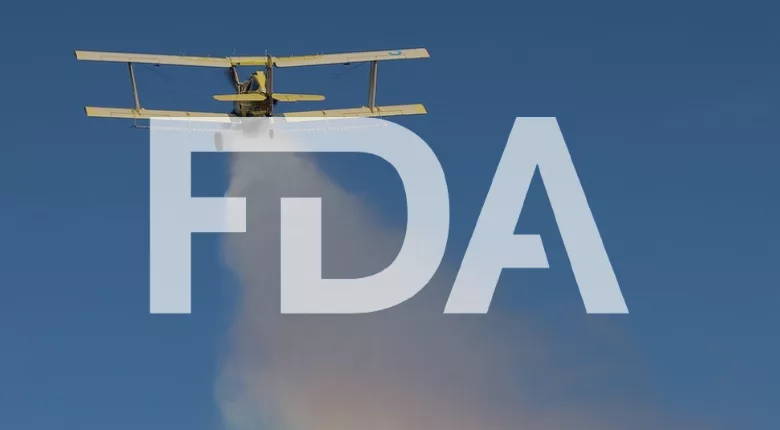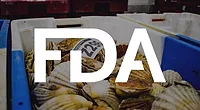FDA Withdraws Guidance on Chlorpyrifos Residues; Publishes Revisions to PCHF Draft Guidance

Image credit: Wilbue via Pixabay
The U.S. Food and Drug Administration (FDA) recently published revisions to one guidance for industry and withdrew another. Specifically, the agency released revisions to the Introduction and Appendix 1 of Hazard Analysis and Risk-Based Preventive Controls for Human Food: Draft Guidance for Industry (PCHF Draft Guidance), and withdrew Questions and Answers Regarding Channels of Trade Policy for Human Food Commodities with Chlorpyrifos Residues: Guidance for Industry due to the U.S. Court of Appeals voiding a U.S. Environmental Protection Agency (EPA) final rule that revoked all tolerances for the pesticide chemical.
Withdrawal of Guidance for Industry on Enforcement Approach to Human Food with Chlorpyrifos Residues
FDA has withdrawn a 2022 guidance document, titled, Questions and Answers Regarding Channels of Trade Policy for Human Food Commodities with Chlorpyrifos Residues: Guidance for Industry, following a decision by the U.S. Court of Appeals for the Eighth Circuit to void a U.S. Environmental Protection Agency (EPA) final rule that revoked all tolerances for the pesticide chemical chlorpyrifos. A mandate to finalize the court’s judgment was issued on December 28, 2023, reinstating all tolerances for chlorpyrifos residues. The guidance was intended to explain FDA’s enforcement policy for foods containing chlorpyrifos residues after the tolerances expired according to the EPA final rule, which is now void.
EPA has amending its regulations to reflect the current legal status of the chlorpyrifos tolerances through a new final rule.
In April 2021, the U.S. Court of Appeals for the Ninth Circuit ordered EPA to issue a final rule either revoking all chlorpyrifos tolerances or modifying its chlorpyrifos tolerances, provided EPA could make a determination that those modified tolerances met the safety standard mandated by the Federal Food, Drug, and Cosmetic Act (FFDCA). The Ninth Circuit ordered EPA to issue that final rule within 60 days of the issuance of the mandate.
As a result of the short timeframe, EPA found that, based on the available data and anticipated exposure from registered uses of chlorpyrifos, it could not determine that there was a reasonable certainty of no harm from aggregate exposure, including food, drinking water, and residential exposure. Consequently, in the Federal Register of August 30, 2021, EPA issued a final rule amending 40 CFR 180.342 to revoke all tolerances for residues of chlorpyrifos. That rule included revocation of tolerances for residues of chlorpyrifos on specific food and feed commodities, on all food commodities treated in food handling and foodservice establishments in accordance with prescribed conditions, and on specific commodities when used under regional registrations. The final rule allowed the tolerances to remain in effect for six months, until February 28, 2022, at which time the tolerances expired.
Gharda Chemicals International, Inc. (Gharda), one of the chlorpyrifos registrants, several grower groups, and other stakeholders subsequently filed objections to EPA’s final rule revoking chlorpyrifos tolerances. The Agency denied those objections in an order issued in the Federal Register on February 28, 2022.
Looking for quick answers on food safety topics?
Try Ask FSM, our new smart AI search tool.
Ask FSM →
Gharda and several grower groups challenged EPA's order denying objections and the tolerance revocation rule in the U.S. Court of Appeals for the Eighth Circuit. On November 2, 2023, the Eighth Circuit issued its decision, vacating EPA's final rule and remanding the matter to EPA for further proceedings. No request for rehearing was filed. On December 28, 2023, the mandate issued, finalizing the court's judgment, and effectuating the vacatur of EPA’s rule revoking tolerances.
Because the Eighth Circuit vacated EPA's rule revoking chlorpyrifos tolerances, those tolerances are legally currently in effect.
Revisions to PCHF Draft Guidance
The recent changes to the PCHF Draft Guidance address comments that FDA received on the original drafts that were made available in 2016. The revisions also provide additional context and information on hazards in food categories of interest to ensure that the available draft documents adequately reflect the agency’s current thinking on the most relevant food safety hazards.
The revised introduction to the draft guidance includes information that better explains the purpose of the guidance and provides general information applicable to all chapters, including an expanded glossary of terms that are used and defined in later chapters, and the addition of three new sections on training, references, and resources.
The training section provides general information on training relevant to the PCHF rule. The references section includes a comprehensive bibliography of references that have been used in certain chapters of the guidance, along with references expected to be included in future chapters that will be released. The new resources section features a compilation of resources that may be useful to someone using the guidance.
The second set of revisions were made to Appendix 1 of the draft guidance, titled, “Known or Reasonably Foreseeable Hazards (potential hazards).” As informed by stakeholder concerns over specific hazard-commodity associations and the agency’s use of Appendix 1 during inspections, FDA made significant changes, including:
- The addition of new sections and descriptions meant to better explain the purpose of Appendix 1, how it was developed, and how it should be used
- Revisions to the product categories identified within Appendix 1 to better reflect food ingredients rather than finished products
- Replacement of a series of process-related hazard tables with a discussion of those hazards
- An updated discussion on food allergen hazards
- Citations to scientific, technical, and regulatory information references, particularly for less-commonly known hazards identified for different food categories.
Both the draft Introduction and Appendix 1 are available for public comment, and comments can be submitted to regulations.gov under Docket No. FDA-2016-D-2343 within 120 days of publication in the Federal Register.









.webp?t=1721343192)